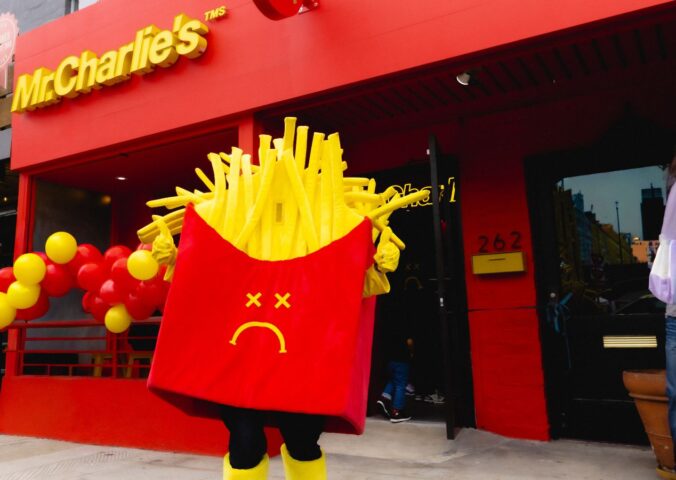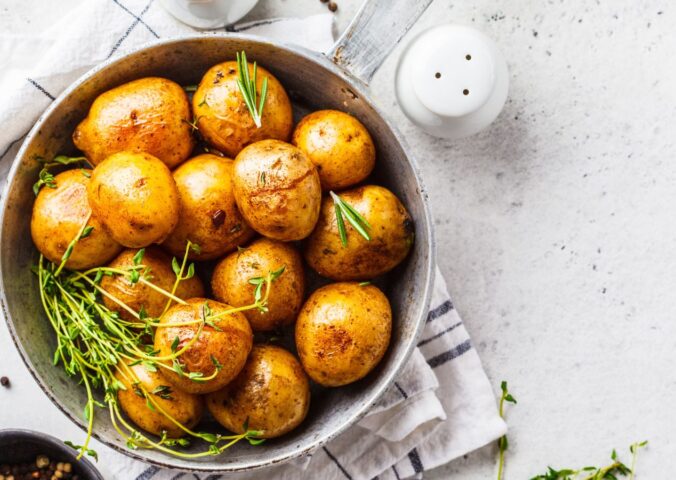In the late 2000s, kale rose the ranks of the brassica family of vegetables to become a trendy “superfood.” Demand for kale increased so much that kale farms in the US doubled in number between 2007 and 2012. People wore t-shirts saying “eat more kale”; by 2015, the word had made it onto Beyoncé’s sweatshirt in a 2015 music video.
Whether or not you want to proclaim your love of kale on your clothes, its reputation as being very good for us is well-deserved. “The term ‘superfood’ technically isn’t scientifically based,” Emily McKee, dietitian at the Vegan Society, tells Plant Based News. “[But] we can understand it to mean a food with high nutritional density that provides us with a substantial range of micronutrients such as vitamins, minerals and antioxidants. Kale certainly fits that description.”
Here are all the ways the nutritional content of kale makes it one of the best foods to eat, and 10 recipes to help you get more of it in your diet.
Rich in iron and vitamins
Kale, the cousin of broccoli, brussels sprouts, cabbage, and cauliflower, is packed with vitamins, fiber, iron, and antioxidants.
One cup of cooked kale contains around 2.24mg of iron, contributing between 15 and 25 percent of your daily requirement. Importantly, that same amount of kale will also contain your full day’s vitamin C, which helps your body absorb more iron. This makes kale a great source of iron for vegans in particular.
There are several other important vitamins in kale too, namely K, E, A, and B6. Along with vitamin C, these play a role in supporting the health of bones, skin, hair, and eyes. Kale is particularly high in vitamin K, with one cup delivering around five times our daily needs. This vitamin helps blood to clot and gives moderate protection against bone fractures.
Folate, also known as B9, helps form red blood cells and supports nervous system functioning. It’s important for pregnant women to get enough to ensure the healthy growth of their baby. A cup of cooked kale contains about 65mcg, which is around a sixth of your daily needs.
Fiber and other nutrients
Kale contains 5.7g of fiber per cup. This may not sound like much – it’s recommended to consume 22 to 34g a day. But if you eat kale in a meal with other fiber-rich foods such as sweet potato, chickpeas, or avocado, you’ll easily get enough.
Kale also provides magnesium, zinc, calcium, phosphorus, and potassium, as well as 4g of protein per cup. Together these contribute to healthy muscle, heart, and nerve function, and support healthy bones.
There are lots of antioxidants in kale too, such as glucosinolates and beta-carotene. These help to protect against cancer and reduce inflammation.
With all these health benefits, how much kale should we be eating? “Whilst there is no ‘recommended daily intake’ for kale specifically, as a leafy green vegetable containing many essential micronutrients you could certainly eat it daily as one of your five-a-day and part of a healthy, balanced vegan diet,” said McKee.
10 kale recipes
There is some evidence that cooking can diminish the nutrient content of kale and that it is better to eat it raw or minimally cooked. Nonetheless, its leaves might feel tough to chew raw, and the stems are definitely made easier to eat by cooking.
Among the recipes below you’ll find kale in both its raw and cooked states, giving you plenty of choice for how to eat it.
Creamy Tahini Kale Salad
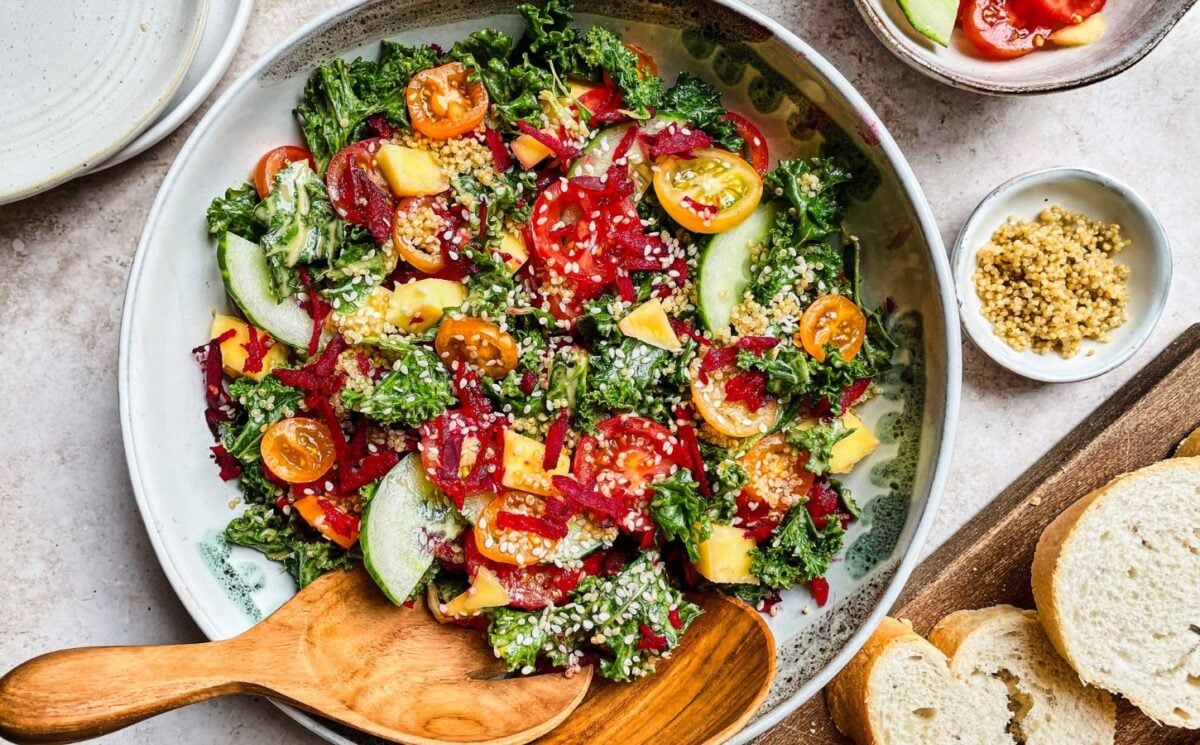
This easy recipe from Viva’s new cookbook, Everyone Can Cook Vegan, involves massaging the kale with the dressing ingredients. Massaging kale might sound like an odd thing to do, but it helps make it less tough by breaking down its fibers so it can be eaten raw. All extras in the salad are optional, with the recipe suggesting ingredients including tinned pulses, artichokes, and cherry tomatoes.
Find the recipe here.
Kale, Cashew Cheese, and Apple Salad
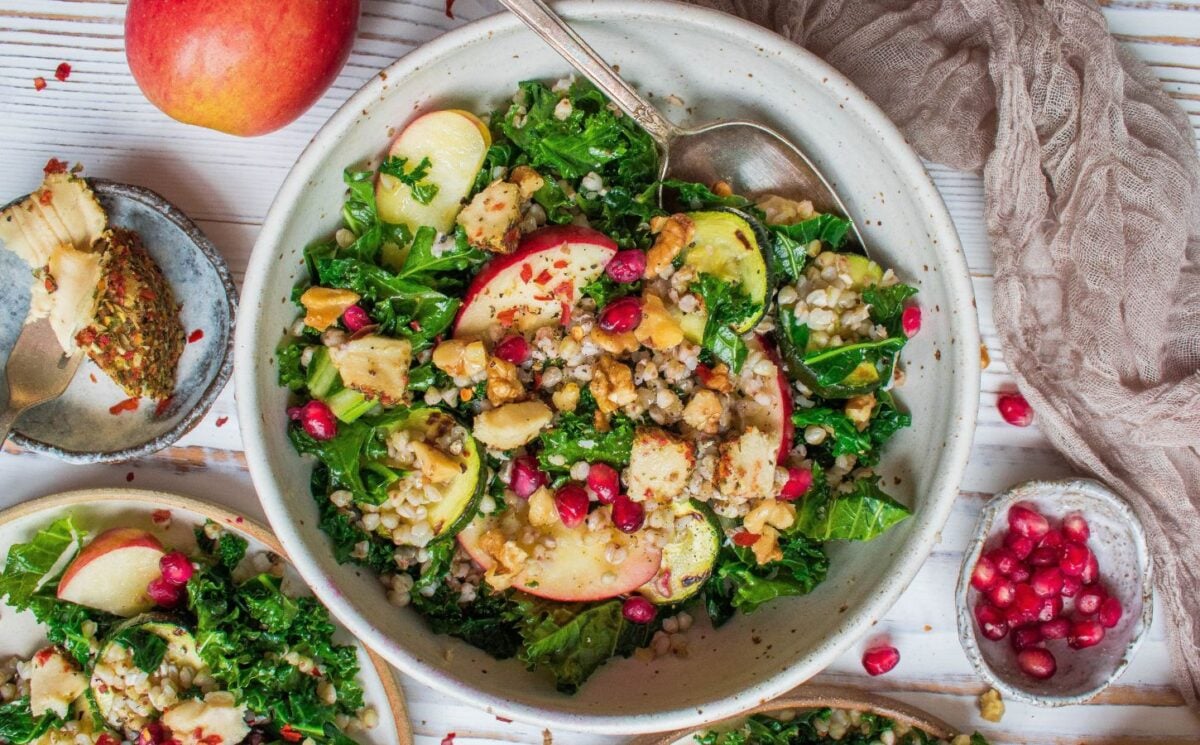
This is another raw kale recipe that requires a little massaging of the leaves to soften them up. But that comes later – first you’ll need to make your cashew cheese a couple of days ahead to let it develop. If you don’t have that kind of time or forethought, you can swap it for any vegan cheese of your choice. Made with apple, buckwheat, pomegranate seeds, and courgette, this salad by Happy Skin Kitchen packs a hearty nutritional punch.
Find the recipe here.
Mushroom Bourguignon With White Bean Mash & Kale Crisps
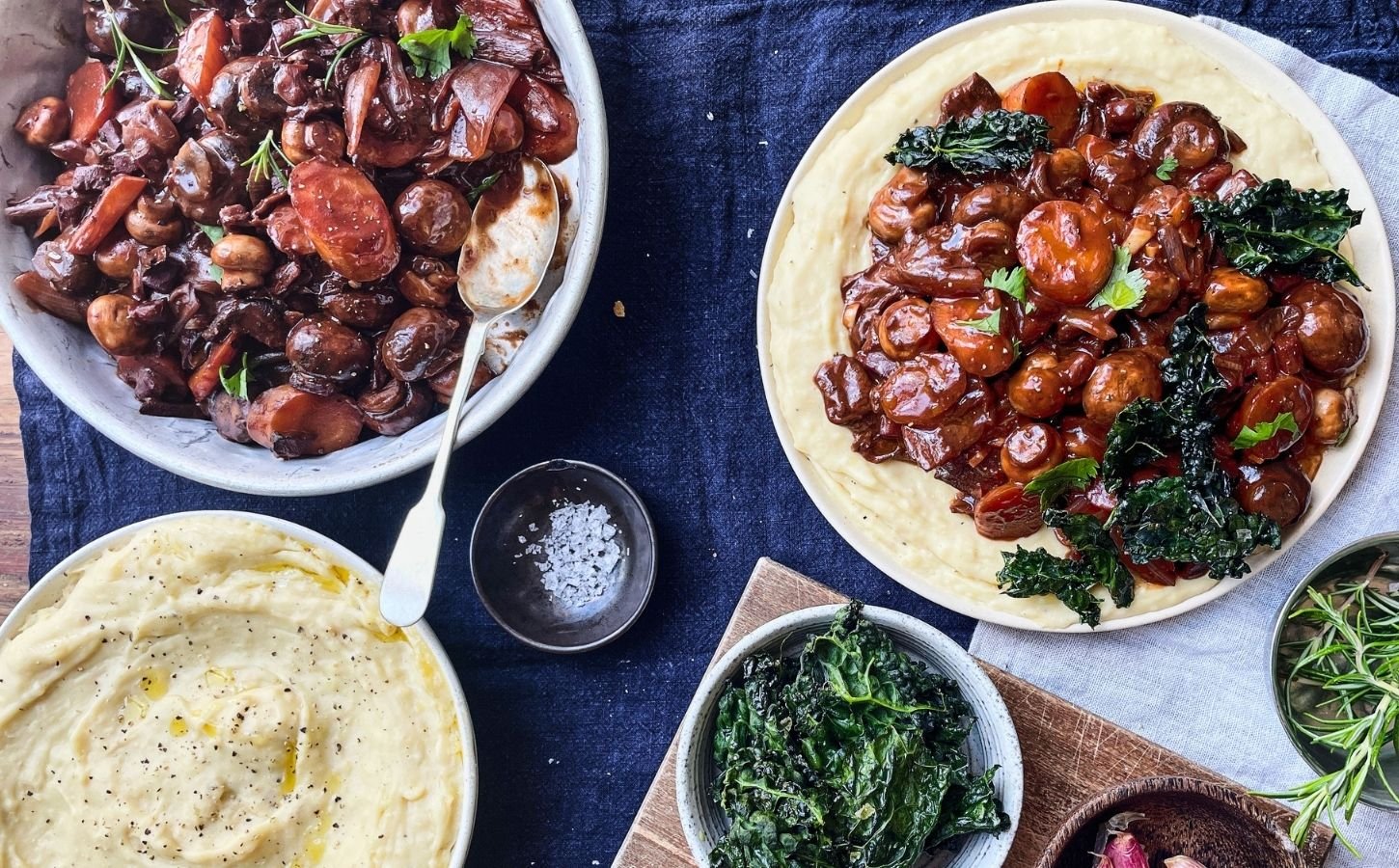
Roasted kale crisps are a lovely side to accompany this mushroom bourguignon from the Viva! Vegan Recipe Club. Just be careful to keep a close eye on the kale as it crisps up in the oven pretty fast. If you prefer, you can steam it instead.
Find the recipe here.
Bean, Kale, And Lemon Stew
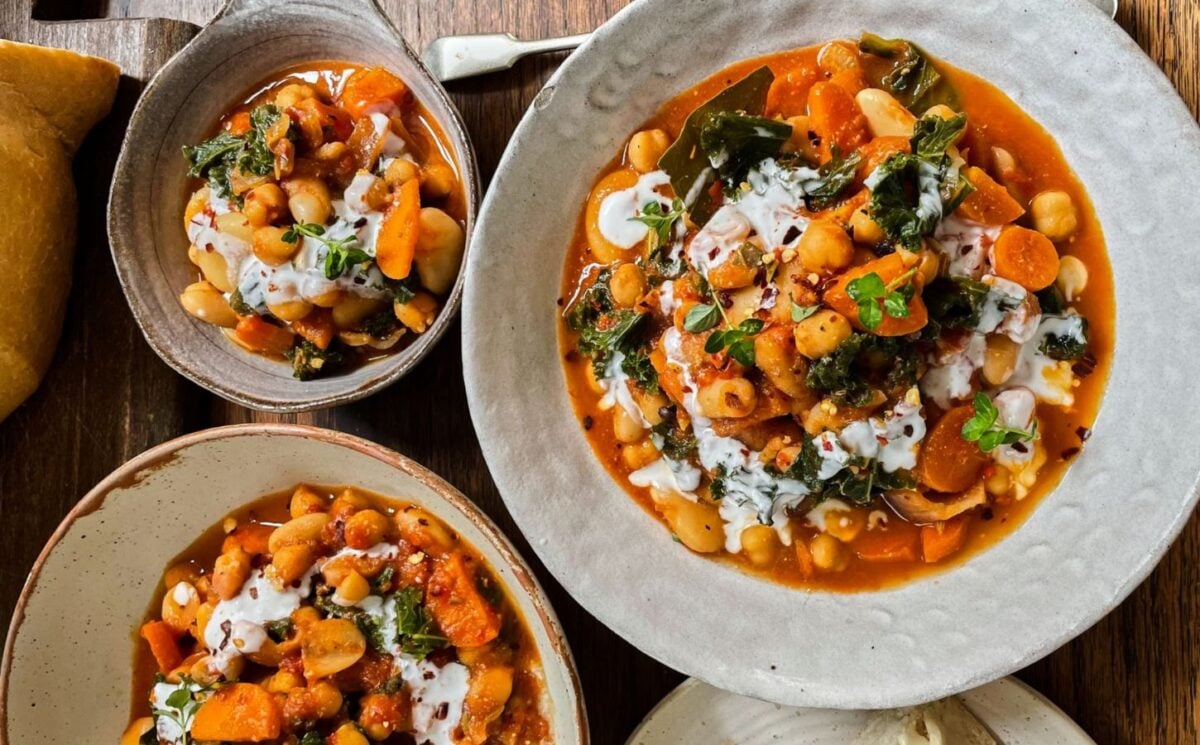
The kale in this recipe, also from the Viva! Vegan Recipe Club, simmers in the stew for a few minutes to soften. The stew itself is packed with other healthy ingredients and only take 30 minutes to make.
Find the recipe here.
Apple, Kale, and Sausage Pasta
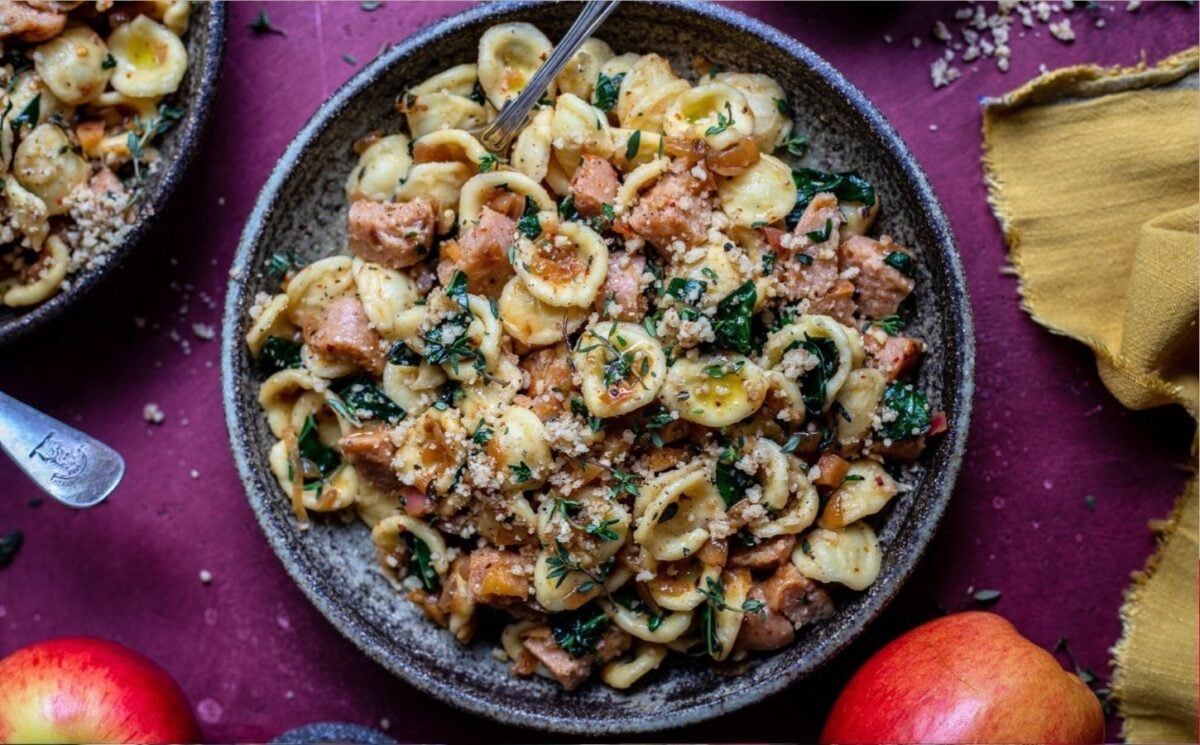
This pasta dish from Happy Skin Kitchen is a big bowl of comfort. It includes a good portion of kale, while the vegan sausages and apple make for a perfect sweet and savory dish. Top it with a “walnut parm” made from walnuts, miso paste, and nooch.
Find the recipe here.
Roast Pumpkin And Kale Salad
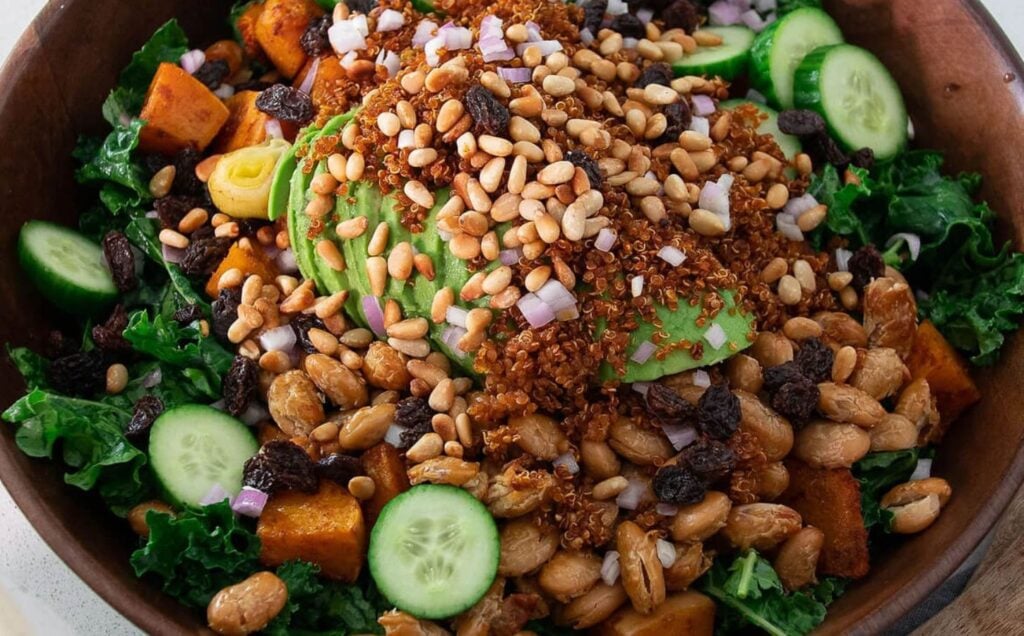
This salad by plantbaes provides almost half of the 30 plant foods (including spices) a week that experts now recommend. The kale remains raw – after some massaging of course – and goes perfectly with the roasted pumpkin and sweet tahini dressing.
Find the recipe here.
Butternut Squash Dhal With Cashew Milk And Kale
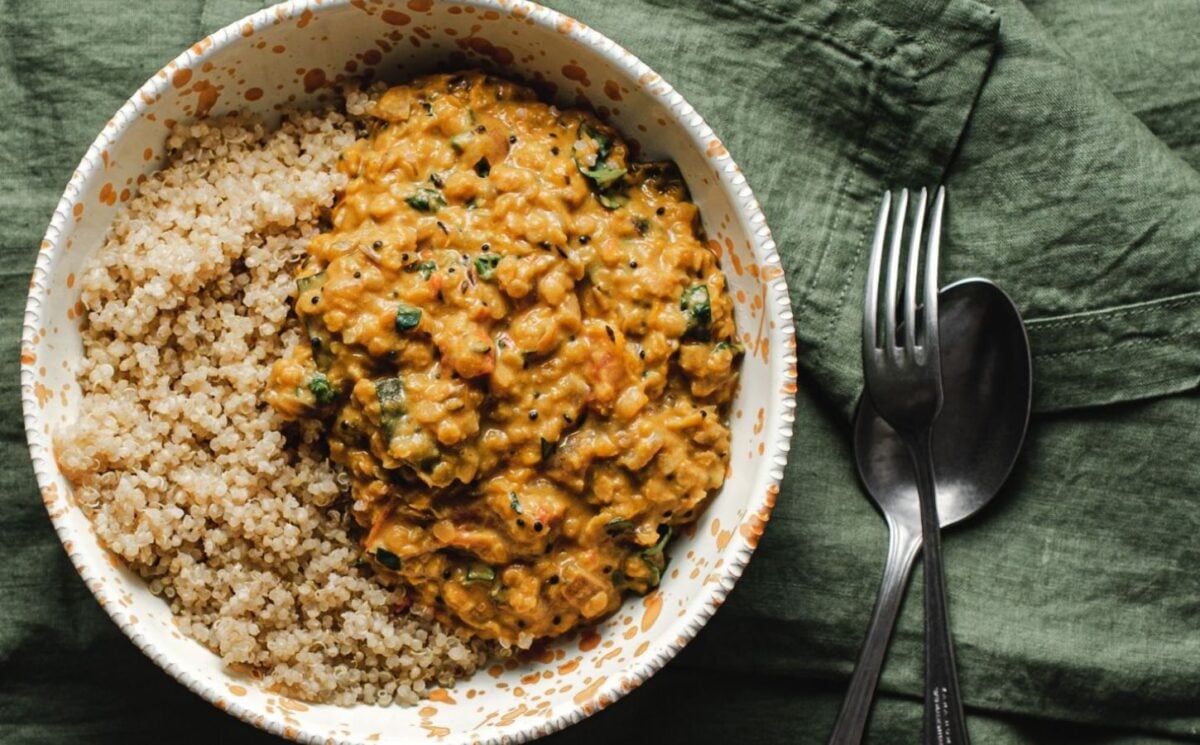
From Ashley Madden’s Plant-Based Delicious cookbook comes this hearty dhal. The combination of lentils and kale means this is an nutrient-dense meal. The iron content is particularly good.
Find the recipe here.
Vegan Omelette With Mushrooms & Kale

The omelette in this recipe by Happy Skin Kitchen is made from silken tofu and chickpea flour, making it a healthy, high protein meal. Sauté the kale with mushrooms before piling on top of the omelette with a helping of guacamole and cashew cream cheese.
Find the recipe here.
Pasta with Cauliflower, White Beans and Kale
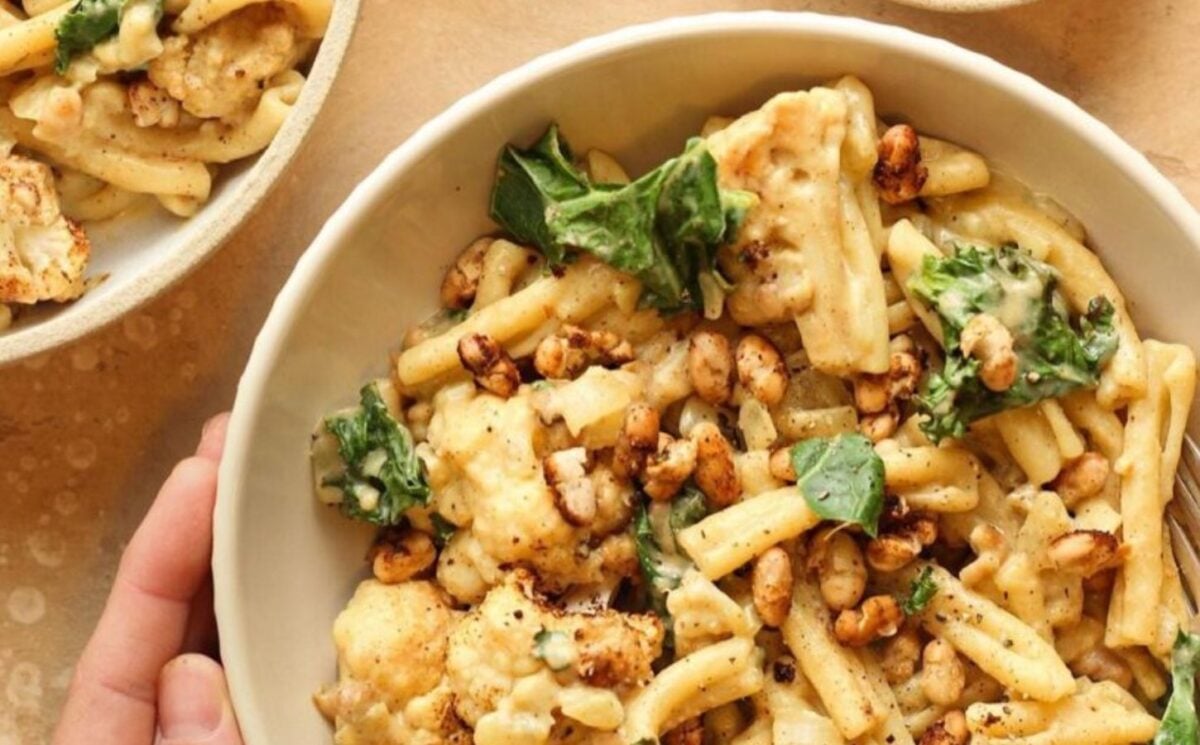
Chunky roasted cauliflower and a creamy sauce make this It’s All Good Vegan pasta dish filling and comforting. Add the kale to the roasting cauliflower and beans for the last few minutes before mixing the whole lot together.
Find the recipe here.
Mushroom And Kale Tofu Scramble
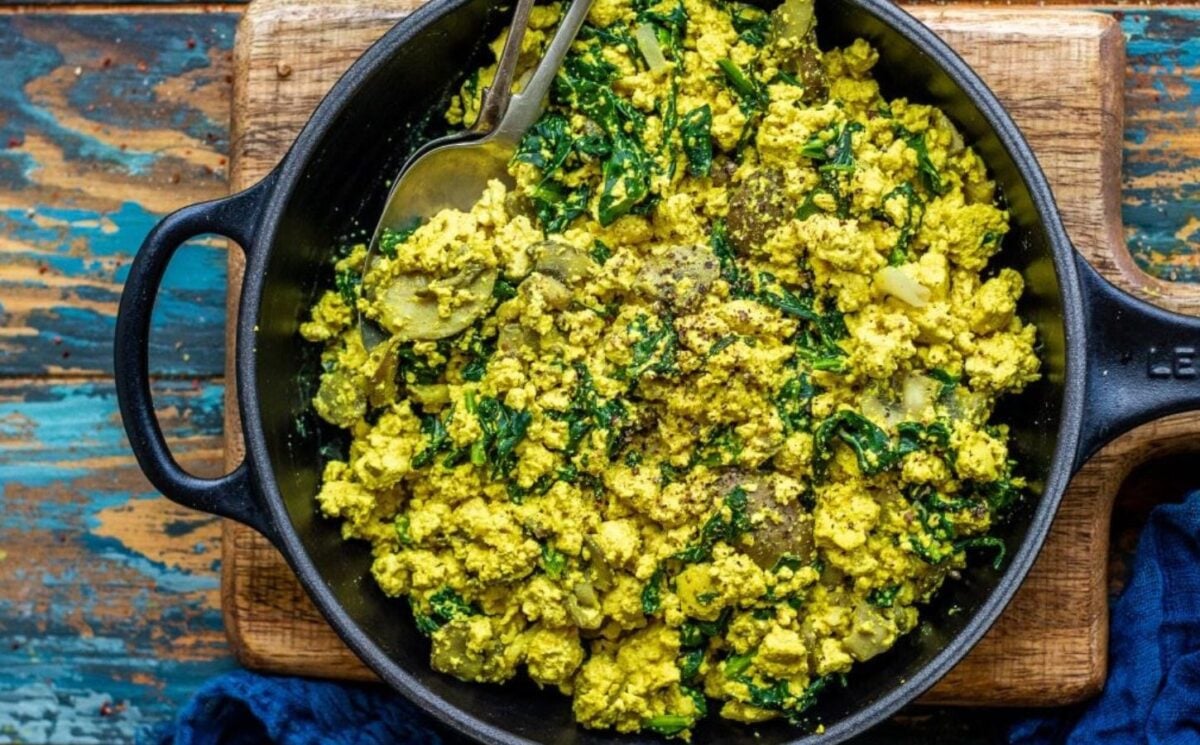
You can whip up this healthy scramble by Happy Skin Kitchen in just 15 minutes. Between the tofu, kale, and mushrooms, you’ve got a lot of nutrients covered in one meal.
Find the recipe here.


